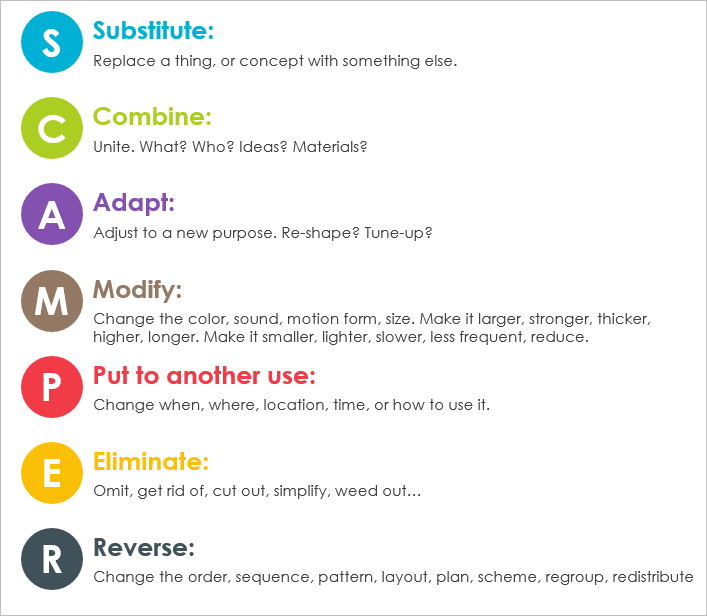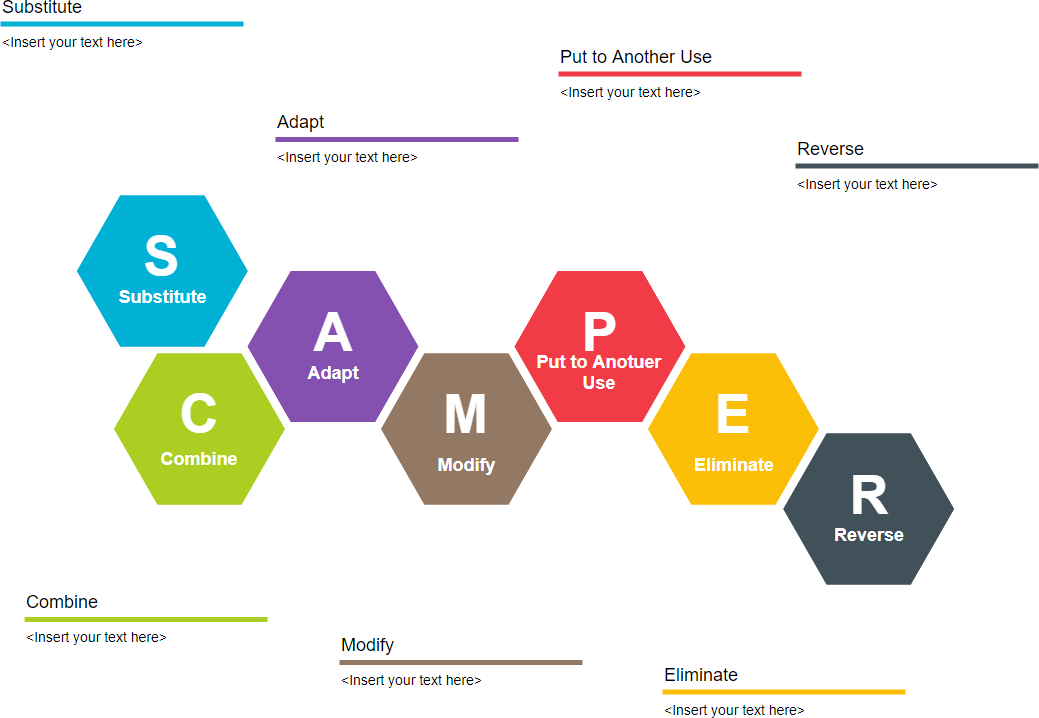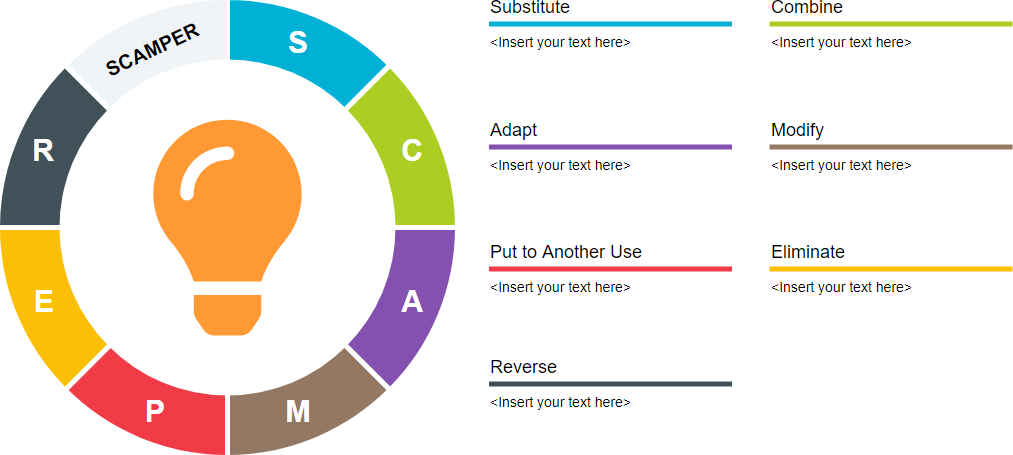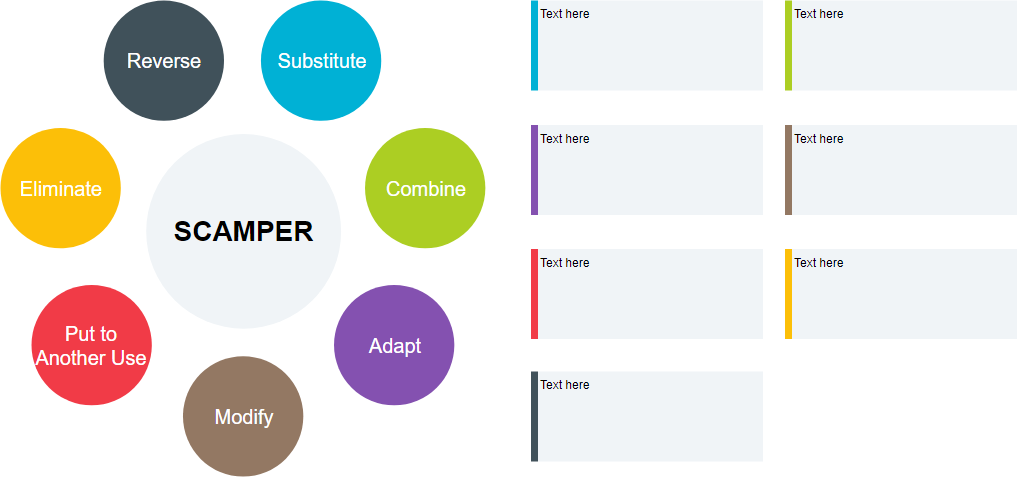The SCAMPER method was proposed by Alex Osborne in 1953. In 1971, American psychologist Bob Elerle advocated the SCAMPER method in his book SCAMPER: “Games for Imagination Development.” It is a way to stimulate people’s creative thinking and it is one of the easiest graphic techniques of mind mapping for critical thinking and brainstorming ideas.
For example, you can use the SCAMPER method to guide students in the course of the discussion before the design made by the maker, or the summary and reflection after the production is completed. In any part of the maker course, students may also actively use one or more of the SCAMPER method to improve maker works.
SCAMPER is an acronym for a series of words:
- Substitute comes up with another topic that is equivalent to the present topic.
- Combine adds information to the original topic.
- Adjust identifies ways to construct the topic in a more flexible and adjusted material.
- Modify, magnify, minify creatively changes the topic or makes a feature/idea bigger or smaller.
- Put to other uses identifies the possible scenarios and situations where this topic can be used.
- Eliminate removes ideas or elements from the topic that are not valuable.
- Reverse, rearrange evolves a new concept from the original concept.

SCAMPER for New Product Development with Case Studies
It can also be useful for generating ideas for new products and services by encouraging your team to ask the following 7 questions, which will help you understand how you can innovate and improve existing products, services, problems and ideas. In addition to product improvement, it can also be used to improve the operational process, helping workers to review existing work items and various arrangement possibilities.
SCAMPER Case Studies – New Beverage
Suppose today we are developing a new beverage, we can think from these seven directions
Step1. Replace – What alternatives are available for bottle materials? What natural ingredients of the beverage contents can be replaced with?
Step2. Merge / Combine – Can the marketing of beverages be promoted together with a combination of other products?
Step3. Adapt – Can I mix it with ingredients to make a mix and match drink with flesh and crisps? How to formulate the taste to satisfy the taste buds of the general public?
Step4. Magnify – How could the color of the drink look better? How does the proportion of additives affect the taste and make it smoother?
Step5. Put to other uses – Is it possible to boost the body? i.e. Refreshing? Additional effects such as beauty
Step6. Remove – Remove unnecessary additives to make drinks more natural? Does designing one-piece packaging reduce costs?
Step7. Reverse –What if you develop a drink made entirely without water?
When thinking about a product, we need to spend a lot of effort, using this thinking method to reshuffle the existing things, to develop a new idea. In addition to creative ideas, it can also be used for brainstorming to improve the workflow.
SCAMPER Templates


